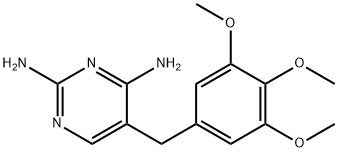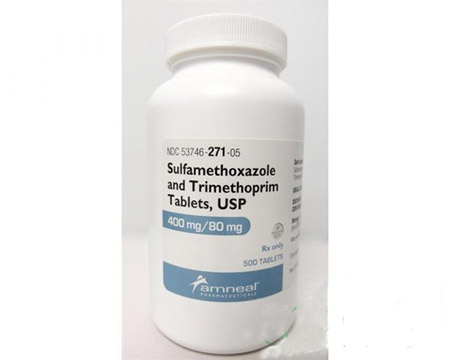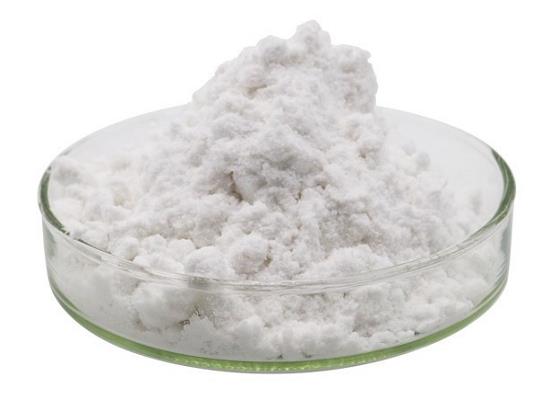Trimethoprim: In-depth analysis of the mysteries of this broad-spectrum antimicrobial agent
Introduction
Trimethoprim (TMP), as an important broad-spectrum antimicrobial, has attracted much attention since its discovery in the early 1960s because of its unique pharmacological properties and wide application prospects. It is not only used alone for the treatment of a variety of infectious diseases but also often combined with sulfonamides to form a powerful antibacterial synergist, which greatly improves the antibacterial effect. This article will discuss its chemical properties, pharmacological effects, clinical applications, adverse reactions, and future prospects in order to provide readers with a comprehensive and in-depth understanding.1
Basic information
Chemical properties
Trimethoprim, chemical name 2,4-diamino-5-(3,4,5-trimethoxybenzyl) pyrimidine, molecular formula C14H18N4O3, molecular weight 290.318. Its appearance is white or white crystalline powder, odorless, bitter taste, slightly soluble in chloroform, slightly soluble in ethanol or acetone, almost insoluble in water, but easily soluble in glacial acetic acid. These solubility characteristics provide a basis for its application in different formulations.

Physical Properties
The melting point of trimethoprim is 199~203°C, the boiling point is 526°C, and the flash point is 271.9°C. Its density is 1.252g/cm³, showing high stability. These physical properties are essential for the storage and transportation of drugs, as well as the preparation of preparations.2
Pharmacological effects
Antibacterial mechanism
The main antibacterial mechanism of trimethoprim is that it can inhibit the dihydrofolate reductase of bacteria, thus blocking the normal metabolic process of folate in bacteria. Folic acid is necessary for bacteria to synthesize nucleic acids and proteins, and a lack of folic acid will cause bacterial growth to be hindered or even death. Through this mechanism, it effectively inhibits the growth of a variety of Gram-positive and Gram-negative bacteria.
Synergistic effect
Trimethoprim is often used in combination with sulfonamides to form a powerful antibacterial synergist. Sulfonamides mainly inhibit the dihydrofolate synthetase of bacteria, and the mechanism of action is complementary to trimethoprim. After the combined use of the two, the two key links of bacterial folate metabolism can be blocked at the same time, so that the antibacterial effect is greatly improved, and even the efficiency can be increased several times to tens of times. This synergistic effect not only enhances the antibacterial effect but also reduces the emergence of drug-resistant strains, which has important clinical significance.3
Clinical application
Single Application
Trimethoprim as a broad-spectrum antimicrobial, when used alone can be used to treat a variety of infectious diseases, such as respiratory infections, urinary tract infections, intestinal infections, and so on. Its high efficiency and low toxicity make it one of the important drugs to treat these diseases. In addition, it can also be used to treat sepsis, meningitis, otitis media, typhoid fever, shigellosis (dysentery), and other serious infections caused by sensitive bacteria.4

Joint Application
The combined application of trimethoprim and sulfonamides is an important aspect of its clinical application. The compound sulfonamide preparation (such as cotrimoxazole) composed of the two in a certain proportion is widely used in the treatment of pulmonary infection, acute (chronic) bronchitis, dysentery, urinary tract infection, pyelonephritis, enteritis, typhoid fever, malaria, and other diseases. It can also be combined with tetracycline, gentamicin, and other antibiotics to produce a synergistic effect and further enhance the antibacterial effect.
Special Applications
In recent years, with the deepening of research on trimethoprim, its clinical application is also expanding. For example, it can be used to treat the fatal complications of measles, the prevent cerebral toxoplasmosis, and a variety of diseases such as cat scratch disease, pigmentosa pruris, achromobacter infection, and pneumocystis carinii infection. It can also be used as veterinary medicine to treat infectious diseases such as septicemia, chicken white dysentery, and typhoid caused by E. coli in livestock, and can also be used for the prevention and control of coccidiosis.5
Adverse reactions and precautions
Adverse Reactions
The adverse reactions of trimethoprim mainly include allergic reactions and gastrointestinal reactions. Anaphylaxis can be manifested as rash, urticaria, pruritus, and other symptoms, and anaphylactic shock can occur in severe cases. Gastrointestinal reactions include nausea, vomiting, and diarrhea. In addition, long-term or large dose use may also cause blood system reactions, nervous system reactions, etc.
Precautions
Contraindications: Preterm infants and newborns should not use trimethoprim, because its liver and kidney function is not fully developed, which may affect drug metabolism and excretion.
Drug interactions: Trimethoprene interacts with a variety of drugs, such as the combination of folic acid antagonists may increase the toxicity of the blood system, and the combination of warfarin may enhance the anticoagulation effect.
References
[1].Huovinen, P.; Sundstr?m, L.; Swedberg, G.; Sk?ld, O., Trimethoprim and sulfonamide resistance. Antimicrobial agents and chemotherapy 1995, 39 (2), 279-289.
[2].Gleckman, R.; Blagg, N.; Joubert, D. W., Trimethoprim: mechanisms of action, antimicrobial activity, bacterial resistance, pharmacokinetics, adverse reactions, and therapeutic indications. Pharmacotherapy: The Journal of Human Pharmacology and Drug Therapy 1981, 1 (1), 14-19.
[3].Eliopoulos, G. M.; Huovinen, P., Resistance to trimethoprim-sulfamethoxazole. Clinical infectious diseases 2001, 32 (11), 1608-1614.
[4].Ok, ü. Z.; Girginkarde?ler, N.; Balcioglu, C.; Ertan, P.; Pirildar, T.; Kilimcioglu, A. A., Effect of Trimethoprim-Sulfamethaxazole inBlastocystis HominisInfection. Official journal of the American College of Gastroenterology| ACG 1999, 94 (11), 3245-3247.
[5].Brogden, R.; Carmine, A.; Heel, R.; Speight, T.; Avery, G., Trimethoprim: a review of its antibacterial activity, pharmacokinetics and therapeutic use in urinary tract infections. Drugs 1982, 23, 405-430.
);Related articles And Qustion
Lastest Price from Trimethoprim manufacturers

US $0.00-0.00/Kg/Bag2024-09-19
- CAS:
- 738-70-5
- Min. Order:
- 1Kg/Bag
- Purity:
- 99% up, High Density
- Supply Ability:
- 20 tons

US $50.00/KG2024-09-19
- CAS:
- 738-70-5
- Min. Order:
- 1KG
- Purity:
- 99
- Supply Ability:
- 1 ton



